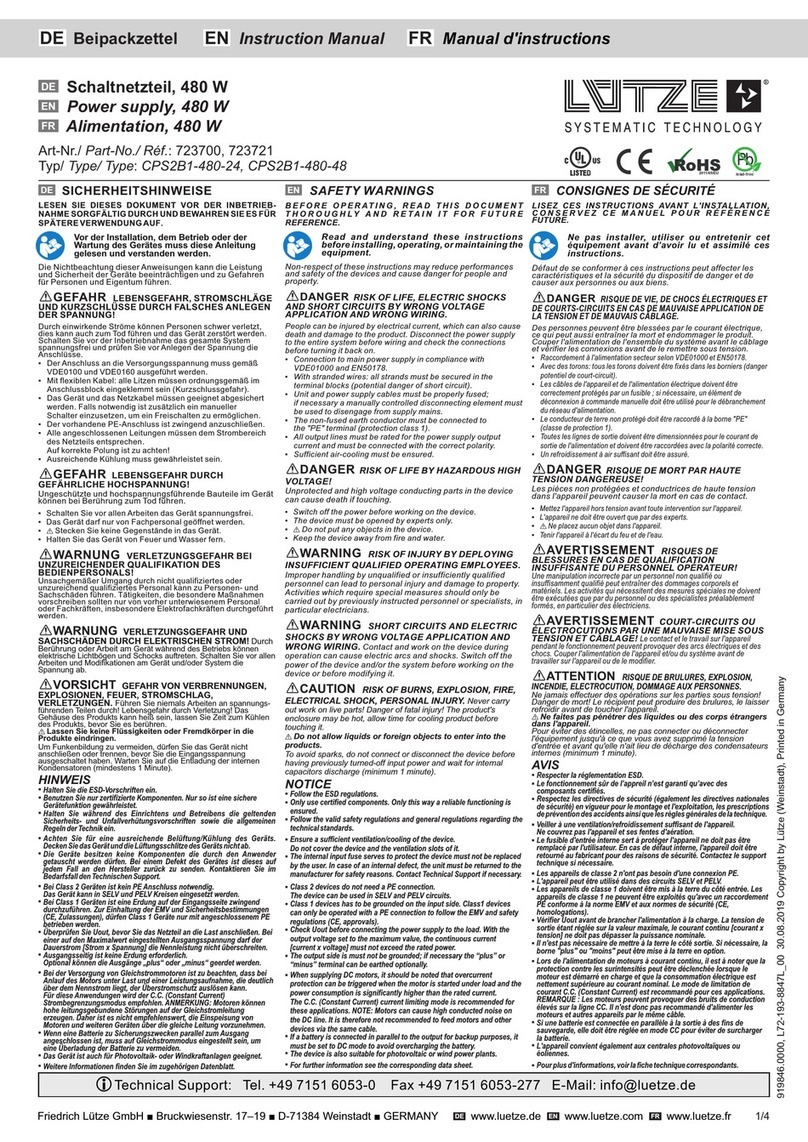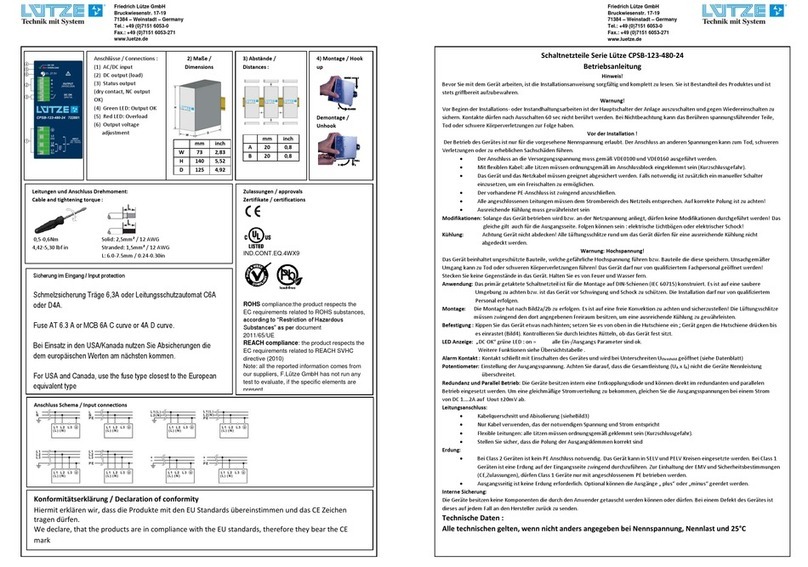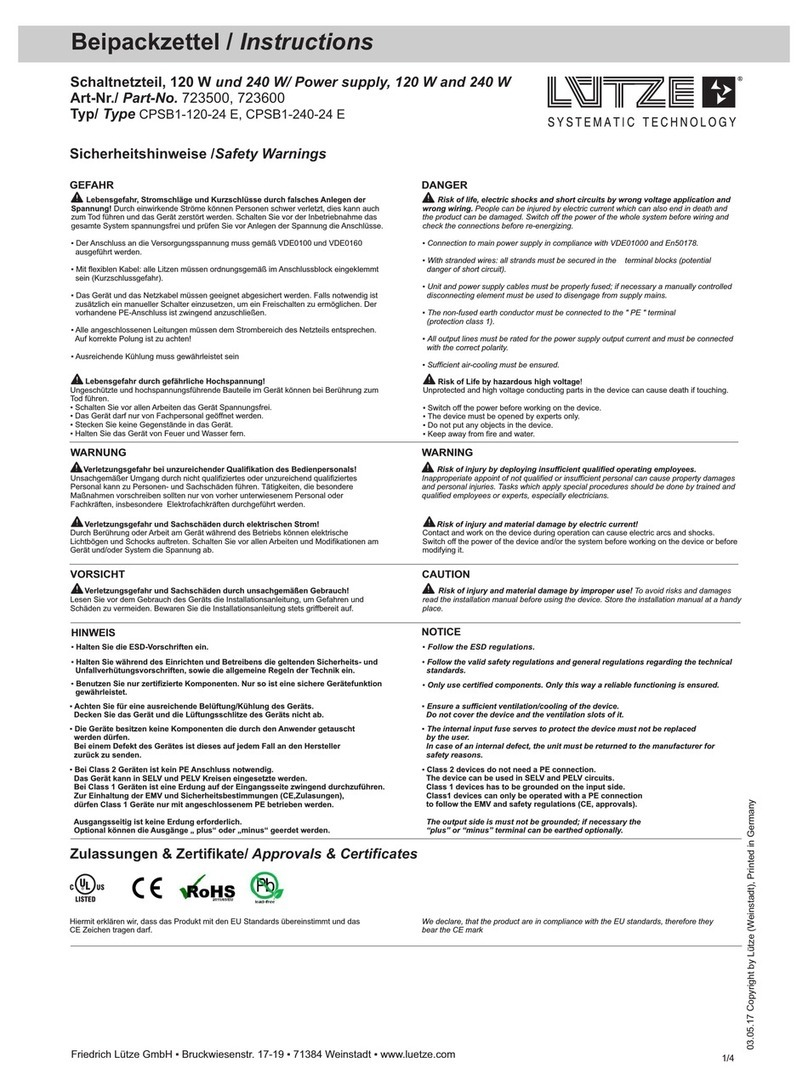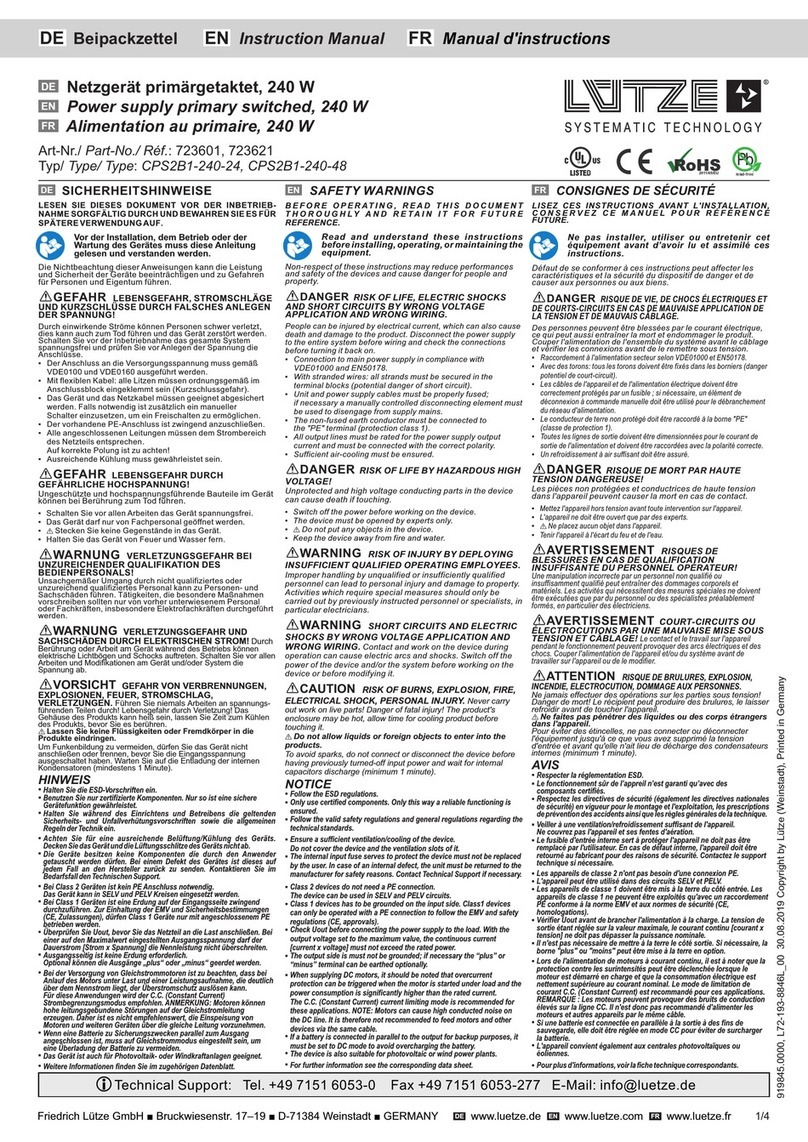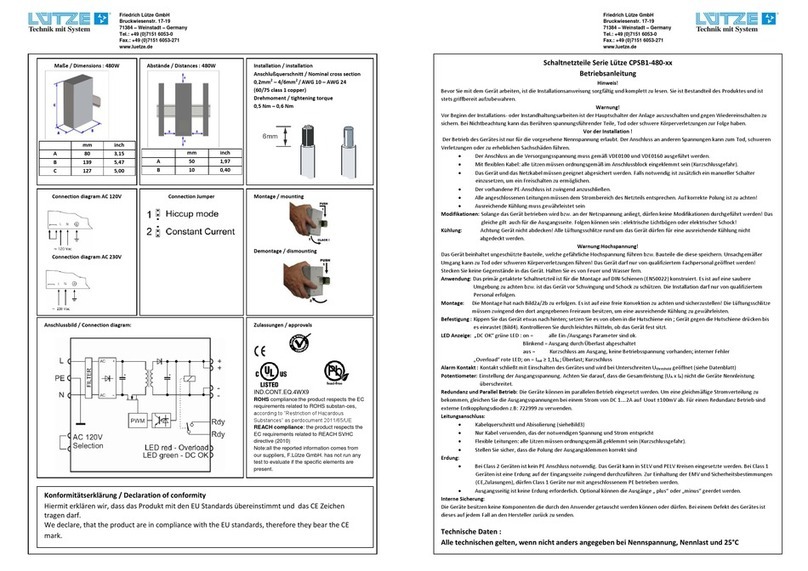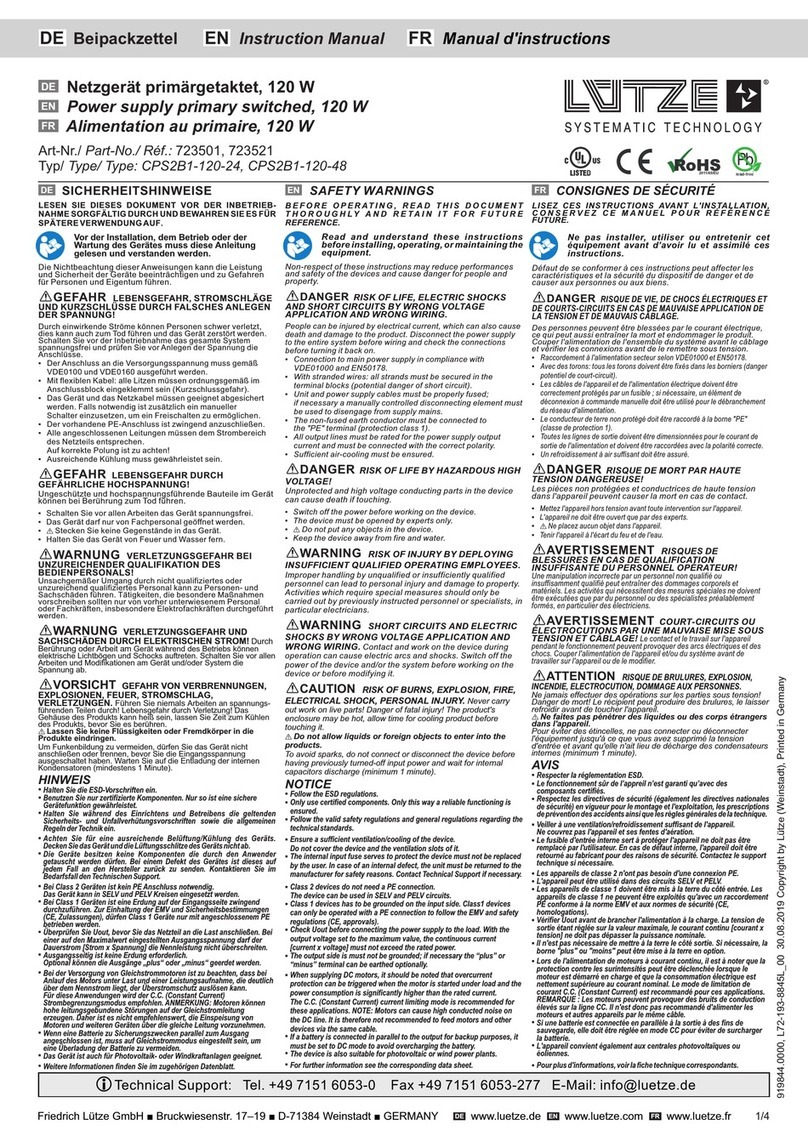CPSB3-2400 - Operating instructions
4
8.3.8 Auxiliary 12V/100mA output ............................................................................................ 27
8.3.9 Auxiliary relay dry contacts.............................................................................................. 27
8.3.10 Connection to a PC through the USB communication box COMM BOX..................... 27
8.4 Maintenance ...................................................................................................28
9Operating modes........................................................................29
9.1.1 Overboost mode (default)................................................................................................ 29
9.2 Constant current limit mode............................................................................30
9.3Battery charger mode (available only on “-24”, “-48” and “-72” models) .........31
9.3.1 Lead acid and lithium iron phosphate (LiFePO4)............................................................ 31
9.3.1.1 Revival function....................................................................................................... 32
9.3.2 Nickel (NiCd, NiMH)......................................................................................................... 33
10 User interface.............................................................................34
10.1 Principles of operation.....................................................................................34
10.2 Contrast adjustment........................................................................................34
10.3 Initial and standard screens............................................................................35
10.3.1 Power ON test screen.................................................................................................. 35
10.3.2 ID screen...................................................................................................................... 35
10.3.3 Default screen.............................................................................................................. 36
10.4 Set-up menu ...................................................................................................36
10.4.1 Power limit.................................................................................................................... 37
10.4.2 Vin min alarm ............................................................................................................... 38
10.4.3 Vin max alarm .............................................................................................................. 38
10.4.4 Vout.............................................................................................................................. 38
10.4.5 Nominal lout ................................................................................................................. 38
10.4.6 Iout alarm threshold ..................................................................................................... 38
10.4.7 Date.............................................................................................................................. 39
10.4.8 Time ............................................................................................................................. 39
10.4.9 Remote shutdown polarity............................................................................................ 39
10.4.10 Temperature measurement unit................................................................................... 39
10.4.11 Enable buzzer .............................................................................................................. 39
10.4.12 Wiring........................................................................................................................... 39
10.4.13 Operating mode ........................................................................................................... 40
10.4.14 Battery type.................................................................................................................. 40
10.4.15 Battery nominal voltage (only for lead acid or LiFePO4 on “-24”, “-48”, and “72”
models) 40
10.4.16 Battery charge voltage (only for nickel on “-24”, “-48”, and “72” models) .................... 40
10.4.17 Battery capacity (only on “-24”, “-48”, and “72” models) .............................................. 40
10.4.18 Battery charge mode (only on “-24”, “-48”, and “72” models) ...................................... 41
10.4.19 Relay active on “DC OK”.............................................................................................. 41
10.4.20 Relay active on “Iout OK” ............................................................................................. 41
10.4.21 Relay active on “Temperature OK” .............................................................................. 41
10.4.22 Setting:......................................................................................................................... 41
10.4.23 Relay active on “AC OK” .............................................................................................. 41
10.4.24 Lock settings ................................................................................................................ 42
10.4.25 Product name............................................................................................................... 42
10.5 Measurements ................................................................................................42
10.5.1 Page 1.......................................................................................................................... 42
10.5.2 Page 2.......................................................................................................................... 42
10.5.3 Page 3.......................................................................................................................... 42
10.5.4 Page 4.......................................................................................................................... 42
10.5.5 Measurement accuracy................................................................................................ 43






